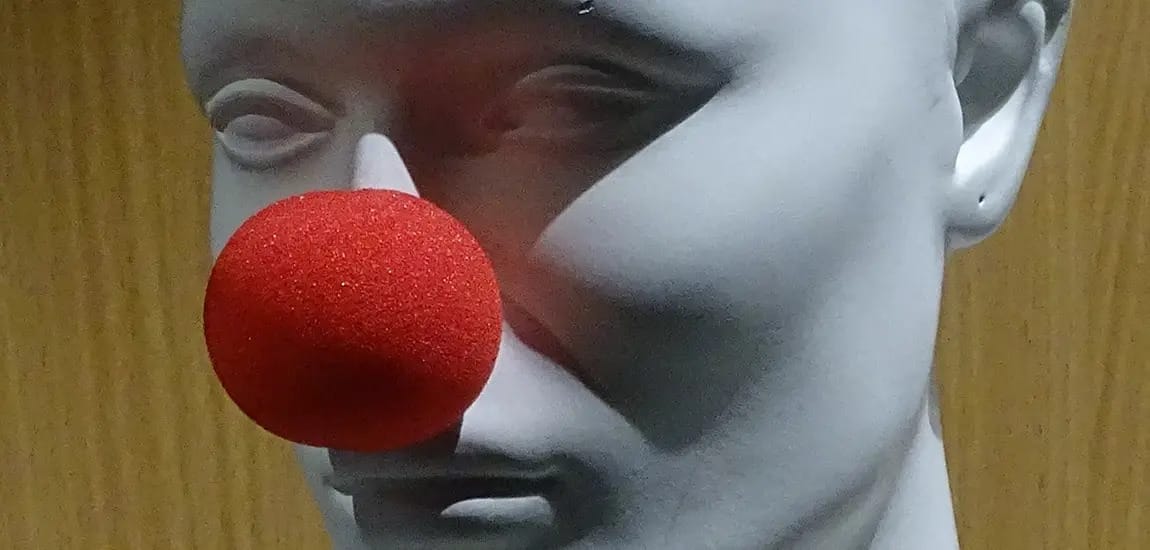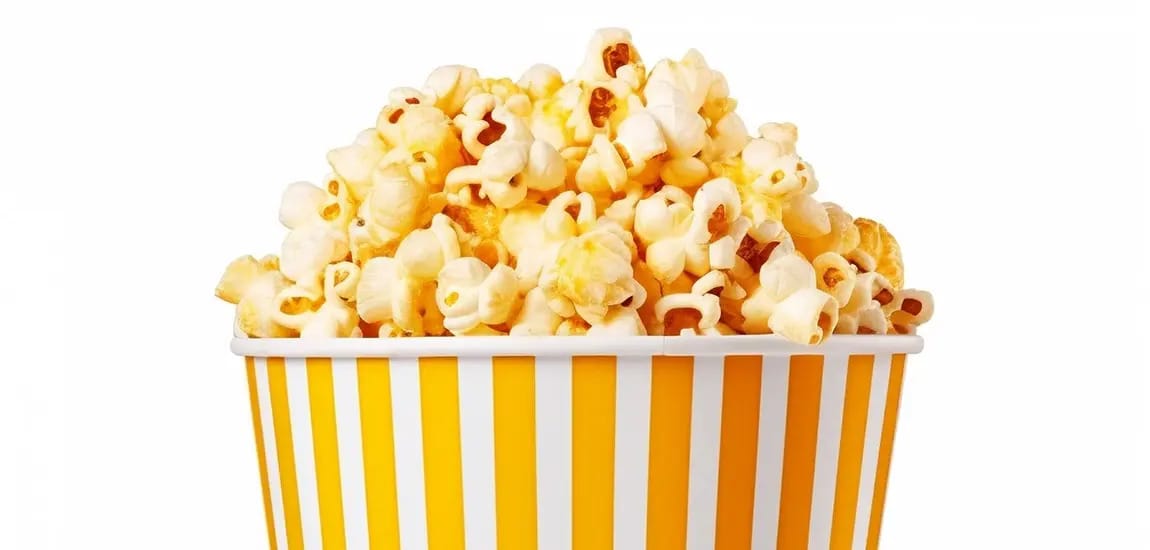- Hollywood Tech Nerds
- Posts
- Apple Gets Practical and Coke Gets Creepy
Apple Gets Practical and Coke Gets Creepy
PLUS: Being Silly About Tilly
Hi Hollywood tech nerds!
In this week’s post:
Subscribe to get Hollywood Tech Nerds magically delivered to your inbox every Tuesday!
Apple Gets Practical and Coke Gets Creepy

If you’ve watched Apple TV lately, you’ve likely noticed that not only have they updated the service’s name but also the logo that appears at the head of all of their original content.
Here’s the cool part: this new logo was created practically!
This process started with a series of physical versions of the Apple TV logo, each sculpted from solid glass and made in partnership with the London-based creative studio Optical Arts. Every piece was cut and polished differently to study how it interacted with light, reflections, and depth.
Once the final version of the logo was selected, it was filmed several times under specific lighting conditions. The team embarked on a weekslong series of experiments with light angles, diffusion, movement, and color, refining exactly how each shot should reflect and refract on camera. Both of the final mnemonics feature the Apple logo flipping through various glowing, prismatic hues before ultimately landing on the new static logo.
You can watch a video making-of via the FastCompany link above. Interesting that this is being so extensively publicized! It’s not like you hear a ton about the production work that takes place behind most studio logos. I wonder if it has anything to do with last year’s blowback over their “Crush” ad, which seemed to many a particularly unwelcome signal as to Apple’s AI stance. As I wrote at the time:
To me, it’s simple: there’s been a significant vibe shift around tech, particularly for people who work in creative fields… aka Apple’s core audience! In 2008, tech tools were exciting. The iPhone had just released, Facebook was a functional place to connect with people in your life, Google search was second to none. The promise of technology was that of life improvement.
In 2024, that promise is much more complicated. We are beset by scams, grifts, hype and nonsense babbled by our supposed genius tech gurus.
It shouldn’t be surprising that in 2024 the image of a guitar and a sculpture being relentlessly crushed by a tech company feels bad to watch. “Crush!” was intended as an ad, but instead comes across as a warning. Does the tech industry understand this dynamic?
Perhaps Apple does understand this dynamic after all! You know who probably doesn’t understand it? Coke!
I guess Coca-Cola isn’t satisfied with simply rotting our teeth and has decided to also rot our brains. It’s yet another AI-generated holiday ad, this year’s featuring Zootopia-infringing animals, trucks with inconsistent tire arrangements, and a grotesque Santa with what appears to be a mutated butt-hand.

Coca-Cola has also helpfully posted a “behind the scenes” on the making of their AI-generated ads, hilariously featuring terrible AI voiceovers explaining the process.
Embarrassing stuff! Also embarrassing: one of the AI “production companies” for the ad posted their own now-deleted behind the scenes, in which Twitter users located multiple instances of the company pretending they had done more conceptual work on the ad than they had actually performed.
Unfortunately I think despite the blowback, we will continue to see companies take the Coke path over the Apple path… at least until the AI companies stop subsidizing their actual costs.
Being Silly About Tilly

As I outlined what I wanted to write about this week, my good friends at Deadline dropped an incredible gift right in my lap: an article with the following title: “Tilly Norwood Creator Eline Van Der Velden Talks Backlash, Reveals Another 40 AI Actors Are In The Pipeline & Explains Why They Will Never Replace Real Actors”. Bless you, Deadline, bless you!
Deadline starts off this hard-hitting piece of journalism strong, really framing things in an interesting and provocative way:
When actress and technologist Eline Van der Velden sat down for a Deadline-moderated panel at the Zurich Summit in September, she never could have anticipated the intense global reaction that Tilly Norwood, the first AI-created actress from her fledgling AI talent studio Xicoia, would spark across the world.
Ahhhhh! You don’t actually have to accept the premise that some computer-generated imagery is an “actress”! You don’t need to do marketing for these people! Remember: apply the Shrek Rule to all writing about “Tilly Norwood.” If it would sound ridiculous to talk that way about Shrek, it’s ridiculous to talk that way about “Tilly”!
DEADLINE: So how do you envision this technology fitting into the entertainment world going forward?
VAN DER VELDEN: I feel strongly that there are three genres: animation, traditional live action and the AI genre. Tilly was always meant to be in her AI genre, and that’s where she’ll stay. I also want to be clear about our two different businesses. Particle6 is there to be a force for good in the traditional filmmaking space. We help reduce budgets so projects can enhance creativity with real actors. Plus, there’s the environmental element. It’s an 80% to 90% carbon footprint reduction if you use AI for certain shots. It’s also safer in some instances. Xicoia is really an extension into the AI universe and AI world. And that’s where Tilly lives and that’s where she should stay.
Not much to say other than this is total word salad and indicative of the quality of our industry press that it just lets statements like this slide on through. AI is a separate “genre”? Huh? What does that mean? What’s an example of content that exists in the “AI genre?” Who is watching and paying for such content? If Tilly Norwood [Shrek] is to exist only in the world of “AI,” why would she need a traditional talent agent?
DEADLINE: Did you have an inkling that the revelation you were talking to talent agents for Tilly would spark such a furore?
VAN DER VELDEN: We didn’t think this was so controversial because CAA signed CGI character Lil Miquela [aka Miquela Sousa] in 2020. In hindsight, the tech has come a long way since and Tilly looks a lot more real than Miquela. It’s a very different proposition. When we said we wanted Tilly to be the next Scarlett Johansson, we meant the Scarlett Johansson of the AI genre. We were thinking that in that AI world, she could do with an agent who would get her brand deals and roles in the AI films that are going to be made. A huge creative renaissance is going to happen in that genre. It’s going to be exciting. We wanted to build a character in the vein of Lara Croft.
So… is this just a licensing thing? It sure sounds like simple licensing. If you’re interested in doing a deep dive into Miquela Sousa lore, I recommend this episode of the Endless Thread podcast. Suffice it to say that Miquela Sousa is a sort of half-art project half-“digital influencer” dating from 2016. I would assume that CAA’s agreement with “Miquela” is actually more akin to a licensing agreement with Brud, the company who created “her.” You know, like if McDonald’s wanted Shrek to appear in a commercial.
DEADLINE: How did you create Tilly?
VAN DER VELDEN: We spent almost six months thinking about her, iterating her, creating her, making a different version of her, changing little things about her. It’s been such a long, ongoing process … There was a lot of back and forth, a lot of people working with multiple different tools to get her to look the way she did. We wanted her to be super realistic to show the world where the tech is at and what’s possible. We also wanted her to resonate with a certain audience. Her look was very specific and that was a very creative pursuit, with a lot of humans working on it.
DEADLINE: What specific AI tools did you use to create Tilly?
VAN DER VELDEN: We used a variety of tools, and some are better than others for certain things. In the language-based processing, you’ve got Perplexity, Open AI, Gemini, DeepSeek. There are different ones. You’ll use DeepSeek if you’re using numbers, while OpenAI and ChatGPT tend to be very creative. We’ll try different things out on different things for the right projects. For Tilly, we wanted to look at what would resonate globally. We ended up with an airbrushed version of her and then we went into a more photorealistic phase, which we tweaked and would decide things such as where we would put her freckles. There were so many tweaks before we finally got her. We did some testing with the general population and industry people. Everyone was like, “Wow.” That’s when we knew we had the right one.
This would be a good time for Deadline to have asked why it took that time and effort to create an end result that looks exactly like a person who already exists?
@smartfelllla #greenscreen GUYS WHY IS THIS AI ACTRESS TILLY NORWOOD LOWKEY MY DOPPLEGANGER #ai #aiactress #boo #hashtag
Of course, that would mean Deadline had any sort of journalistic goal beyond just printing kayfabe as actual news. Read the entire interview, and weep!
Kernels (3 links worth making popcorn for)

Here’s a round-up of cool and interesting links about Hollywood and technology:
How large format screenings increasingly drive US box office. (link)
Guillermo del Toro “would rather die” than use generative AI. (link)
Some of the most groundbreaking VFX happens in music videos. (link)